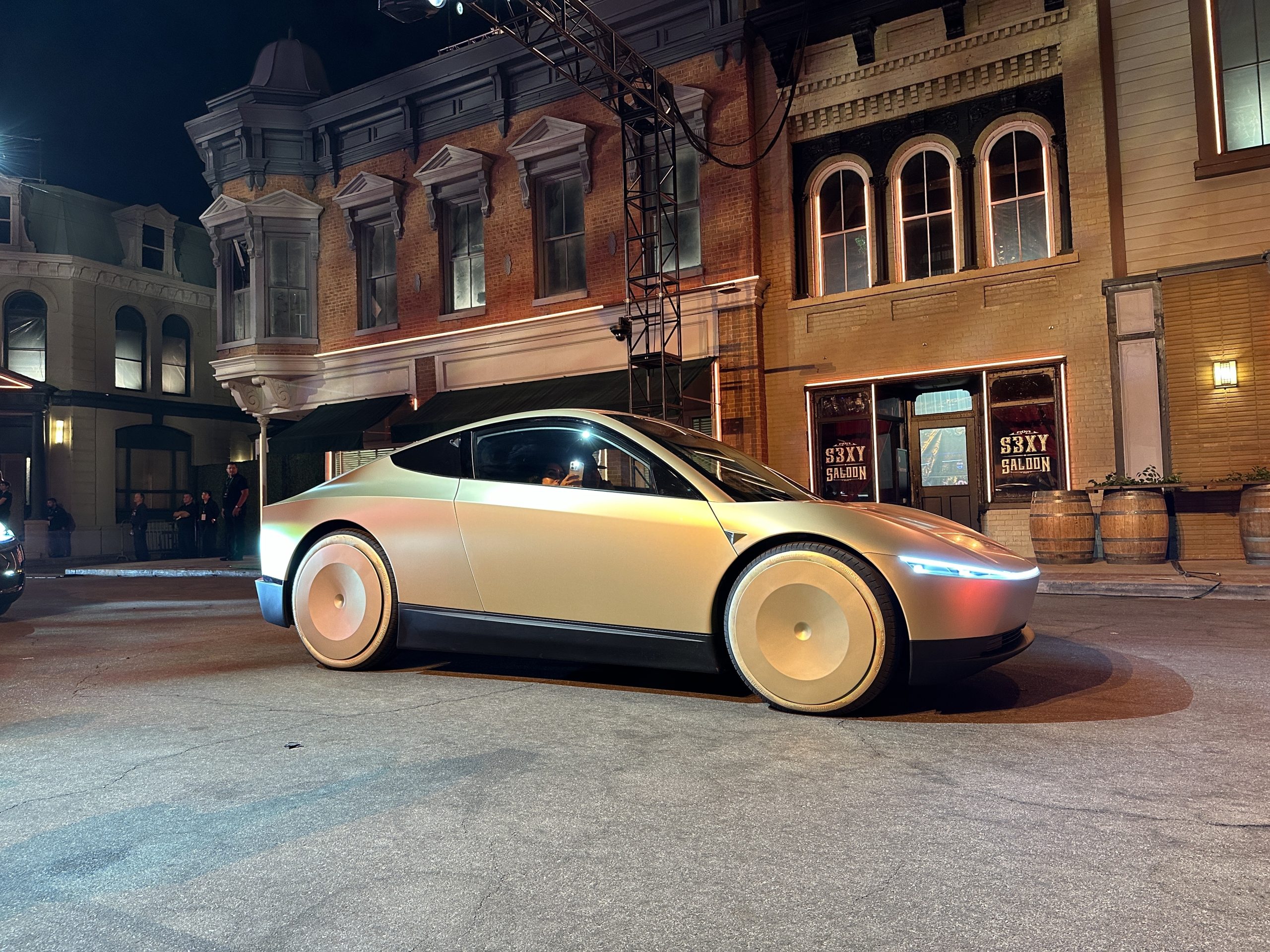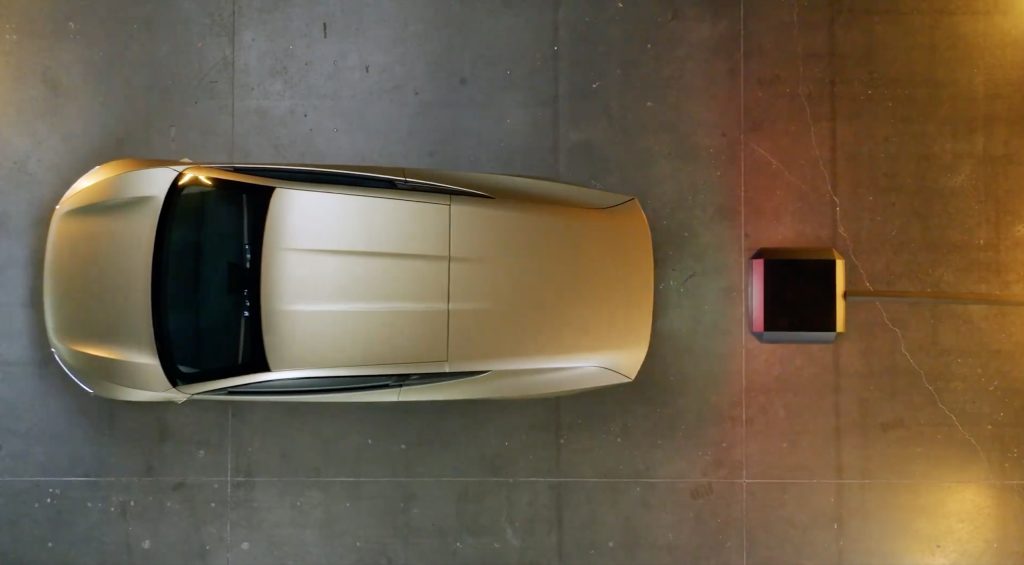News
Tesla reveals Cybercab battery pack and range efficiency
Tesla aims to make the Cybercab the most efficient EV available, as executives revealed in an interview this week.

Two of the top Tesla executives recently spoke about the Cybercab in an interview with a longtime manufacturing industry expert, sharing details about the electric vehicle’s (EV’s) battery pack size, range, and more.
On Monday, Tesla’s VP of Vehicle Engineering Lars Moravy and Senior Design Executive Franz von Holzhausen told manufacturing industry veteran Sandy Munro that Tesla is targeting a battery pack of under 50kWh for the Cybercab, with “close to” 300 miles of real-world range. This would make the two-seater more efficient than any other EV currently in production, partially due to the two-seater’s highly-aerodynamic design.
Munro says he was expecting a battery pack ranging from 55kWh to 60 kWh, noting how much smaller Tesla is aiming to go. Before revealing the range targets, Moravy also detailed how the Cybercab’s aero wheel covers offer optimal aerodynamics to contribute to the impressive efficiency level.
“As much as Franz hates door handles, I hate the wheel-tire interaction, and this is really the best way for us to get the most aerodynamic wheel-tire we could get,” Moravy explains.
From the wheel covers to the overall design, however, von Holzhausen explains how much thought has gone into making the vehicle so efficient—even down to its shape.
“This car is actually really unique in terms of its teardrop shape,” von Holzhausen said. “It’s actually quite narrow in the rear compared to the front. Obviously, you covered the discs, but the aero efficiency is a huge factor in getting to higher range with a smaller battery pack.”
The fact that the vehicle only has two seats also contributes to some of the design choices Tesla was able to implement, as the executive continues to explain.
“Really, because it’s a two-seater we were able to really narrow the hips on this car, and when you come to the rear, you actually start to see how narrow it is, but it’s not unattractive,” he adds.

Credit: Tesla | X
🚨 Lars Moravy, Tesla’s VP of Vehicle Engineering, says the Cybercab is not “painted” and they developed a new process where the polyurethane paint is injected into the panel at the same time as manufacturing
(via Ride the Lightning podcast) pic.twitter.com/5g7vjdOpNn
— TESLARATI (@Teslarati) February 23, 2025
READ MORE ON TESLA CYBERCAB: Tesla reveals design inspiration behind Cybercab’s gold color
Moravy reiterates that Tesla is already starting to install production equipment for the Cybercab at Gigafactory Texas, which was revealed in a shareholder’s letter in late January. He also echoes plans that Tesla is aiming for prototype builds for the Cybercab by this summer, along with a launch event around early 2026.
In recent weeks, increasing numbers of Cybercabs have also been seen testing at Giga Texas, and longtime drone pilot and factory observer Joe Tegtmeyer said that he saw as many as six driving around the site on Monday.
Last month, Moravy also alluded to plans to make the Cybercab “road-trip-capable,” going long distances with wireless charging along the way to make it completely autonomous for passengers.
Along with talking about the Cybercab’s super-efficient design, the two executives also reiterate discussions about the art deco-inspired design of the robotaxi and the larger Robovan, both of which were unveiled in an event in October. Munro and the executives also go on to sit inside the Robovan while talking a bit about its design.
You can see footage from Teslarati‘s first full ride in the Cybercab below, as captured at the “We, Robot” event in Southern California. Or, check out the full Cybercab and Robovan episode from Munro, Moravy, and von Holzhausen below that, clocking in at just under 25 minutes.
🎥: Our FULL first ride in the @Tesla Cybercab pic.twitter.com/6gR7OgKRCz
— TESLARATI (@Teslarati) October 11, 2024
Tesla says its Cybercab wireless charging efficiency is ‘well above 90%’

News
Tesla (TSLA) receives “Buy” rating and $551 PT from Canaccord Genuity
He also maintained a “Buy” rating for TSLA stock over the company’s improving long-term outlook, which is driven by autonomy and robotics.

Canaccord Genuity analyst George Gianarikas raised his Tesla (NASDAQ:TSLA) price target from $482 to $551. He also maintained a “Buy” rating for TSLA stock over the company’s improving long-term outlook, which is driven by autonomy and robotics.
The analyst’s updated note
Gianarikas lowered his 4Q25 delivery estimates but pointed to several positive factors in the Tesla story. He noted that EV adoption in emerging markets is gaining pace, and progress in FSD and the Robotaxi rollout in 2026 represent major upside drivers. Further progress in the Optimus program next year could also add more momentum for the electric vehicle maker.
“Overall, yes, 4Q25 delivery expectations are being revised lower. However, the reset in the US EV market is laying the groundwork for a more durable and attractive long-term demand environment.
“At the same time, EV penetration in emerging markets is accelerating, reinforcing Tesla’s potential multi‑year growth runway beyond the US. Global progress in FSD and the anticipated rollout of a larger robotaxi fleet in 2026 are increasingly important components of the Tesla equity story and could provide sentiment tailwinds,” the analyst wrote.
Tesla’s busy 2026
The upcoming year would be a busy one for Tesla, considering the company’s plans and targets. The autonomous two-seat Cybercab has been confirmed to start production sometime in Q2 2026, as per Elon Musk during the 2025 Annual Shareholder Meeting.
Apart from this, Tesla is also expected to unveil the next-generation Roadster on April 1, 2026. Tesla is also expected to start high-volume production of the Tesla Semi in Nevada next year.
Apart from vehicle launches, Tesla has expressed its intentions to significantly ramp the rollout of FSD to several regions worldwide, such as Europe. Plans are also underway to launch more Robotaxi networks in several more key areas across the United States.
News
Waymo sues Santa Monica over order to halt overnight charging sessions
In its complaint, Waymo argued that its self-driving cars’ operations do not constitute a public nuisance, and compliance with the city’s order would cause the company irreparable harm.

Waymo has filed a lawsuit against the City of Santa Monica in Los Angeles County Superior Court, seeking to block an order that requires the company to cease overnight charging at two facilities.
In its complaint, Waymo argued that its self-driving cars’ operations do not constitute a public nuisance, and compliance with the city’s order would cause the company irreparable harm.
Nuisance claims
As noted in a report from the Los Angeles Times, Waymo’s two charging sites at Euclid Street and Broadway have operated for about a year, supporting the company’s growing fleet with round-the-clock activity. Unfortunately, this has also resulted in residents in the area reportedly being unable to sleep due to incessant beeping from self-driving taxis that are moving in and out of the charging stations around the clock.
Frustrated residents have protested against the Waymos by blocking the vehicles’ paths, placing cones, and “stacking” cars to create backups. This has also resulted in multiple calls to the police.
Last month, the city issued an order to Waymo and its charging partner, Voltera, to cease overnight operations at the charging locations, stating that the self-driving vehicles’ activities at night were a public nuisance. A December 15 meeting yielded no agreement on mitigations like software rerouting. Waymo proposed changes, but the city reportedly insisted that nothing would satisfy the irate residents.
“We are disappointed that the City has chosen an adversarial path over a collaborative one. The City’s position has been to insist that no actions taken or proposed by Waymo would satisfy the complaining neighbors and therefore must be deemed insufficient,” a Waymo spokesperson stated.
Waymo pushes back
In its legal complaint, Waymo stated that its “activities at the Broadway Facilities do not constitute a public nuisance.” The company also noted that it “faces imminent and irreparable harm to its operations, employees, and customers” from the city’s order. The suit also stated that the city was fully aware that the Voltera charging sites would be operating around the clock to support Waymo’s self-driving taxis.
The company highlighted over one million trips in Santa Monica since launch, with more than 50,000 rides starting or ending there in November alone. Waymo also criticized the city for adopting a contentious strategy against businesses.
“The City of Santa Monica’s recent actions are inconsistent with its stated goal of attracting investment. At a time when the City faces a serious fiscal crisis, officials are choosing to obstruct properly permitted investment rather than fostering a ‘ready for business’ environment,” Waymo stated.
News
Tesla FSD v14.2.2 is getting rave reviews from drivers
So far, early testers have reported buttery-smooth drives with confident performance, even at night or on twisty roads.

Tesla Full Self-Driving (Supervised) v14.2.2 is receiving positive reviews from owners, with several drivers praising the build’s lack of hesitation during lane changes and its smoother decision-making, among others.
The update, which started rolling out on Monday, also adds features like dynamic arrival pin adjustment. So far, early testers have reported buttery-smooth drives with confident performance, even at night or on twisty roads.
Owners highlight major improvements
Longtime Tesla owner and FSD user @BLKMDL3 shared a detailed 10-hour impression of FSD v14.2.2, noting that the system exhibited “zero lane change hesitation” and “extremely refined” lane choices. He praised Mad Max mode’s performance, stellar parking in locations including ticket dispensers, and impressive canyon runs even in dark conditions.
Fellow FSD user Dan Burkland reported an hour of FSD v14.2.2’s nighttime driving with “zero hesitations” and “buttery smooth” confidence reminiscent of Robotaxi rides in areas such as Austin, Texas. Veteran FSD user Whole Mars Catalog also demonstrated voice navigation via Grok, while Tesla owner Devin Olsen completed a nearly two-hour drive with FSD v14.2.2 in heavy traffic and rain with strong performance.
Closer to unsupervised
FSD has been receiving rave reviews, even from Tesla’s competitors. Xpeng CEO He Xiaopeng, for one, offered fresh praise for FSD v14.2 after visiting Silicon Valley. Following extended test drives of Tesla vehicles running the latest FSD software, He stated that the system has made major strides, reinforcing his view that Tesla’s approach to autonomy is indeed the proper path towards autonomy.
According to He, Tesla’s FSD has evolved from a smooth Level 2 advanced driver assistance system into what he described as a “near-Level 4” experience in terms of capabilities. While acknowledging that areas of improvement are still present, the Xpeng CEO stated that FSD’s current iteration significantly surpasses last year’s capabilities. He also reiterated his belief that Tesla’s strategy of using the same autonomous software and hardware architecture across private vehicles and robotaxis is the right long-term approach, as it would allow users to bypass intermediate autonomy stages and move closer to Level 4 functionality.








